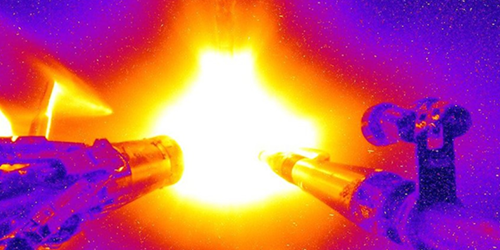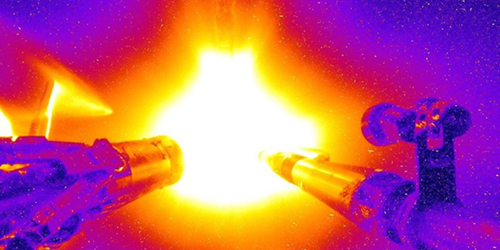Starting Fluid for Laser Fusion
The strategy of inertial confinement fusion (ICF) is to use high-power lasers to rapidly heat and compress a hydrogen fuel capsule. The fuel is typically frozen, but new work suggests that a liquid state could be more successful at reaching fusion conditions. The experiments at the National Ignition Facility (NIF) in California achieve fusion temperatures with a liquid mixture of heavy hydrogen as starting material.
Nuclear fusion—obtained through inertial confinement or other techniques—could provide the world with a clean and abundant energy supply. In the case of ICF, hundreds of high-power lasers produce x rays that strike a hollow fuel capsule from all sides, causing the fuel to implode. If the compression is high enough in the center, the fuel nuclei will fuse together in a self-sustaining reaction.
During its initial campaign between 2009 and 2012, NIF utilized capsules containing an ice layer of heavy hydrogen. These experiments produced fusion but not at a self-sustaining rate, partly because asymmetry in the x-ray illumination prevented the high fuel compression that is needed. Rick Olson from Los Alamos National Laboratory, New Mexico, and his colleagues have opted for a liquid layer because it should require less compression than ice. To test this concept, the team used a special foam that absorbs the liquid fuel into a spherically symmetric layer along the capsule wall. When exposed to NIF’s lasers at reduced power, the imploding capsule reached temperatures sufficient to trigger fusion, as evident from a yield of neutrons comparable to ice-based experiments. Further work will test whether this liquid approach can achieve self-sustaining reactions at higher laser power.
This research is published in Physical Review Letters.
–Michael Schirber
Michael Schirber is a Corresponding Editor for Physics based in Lyon, France.





